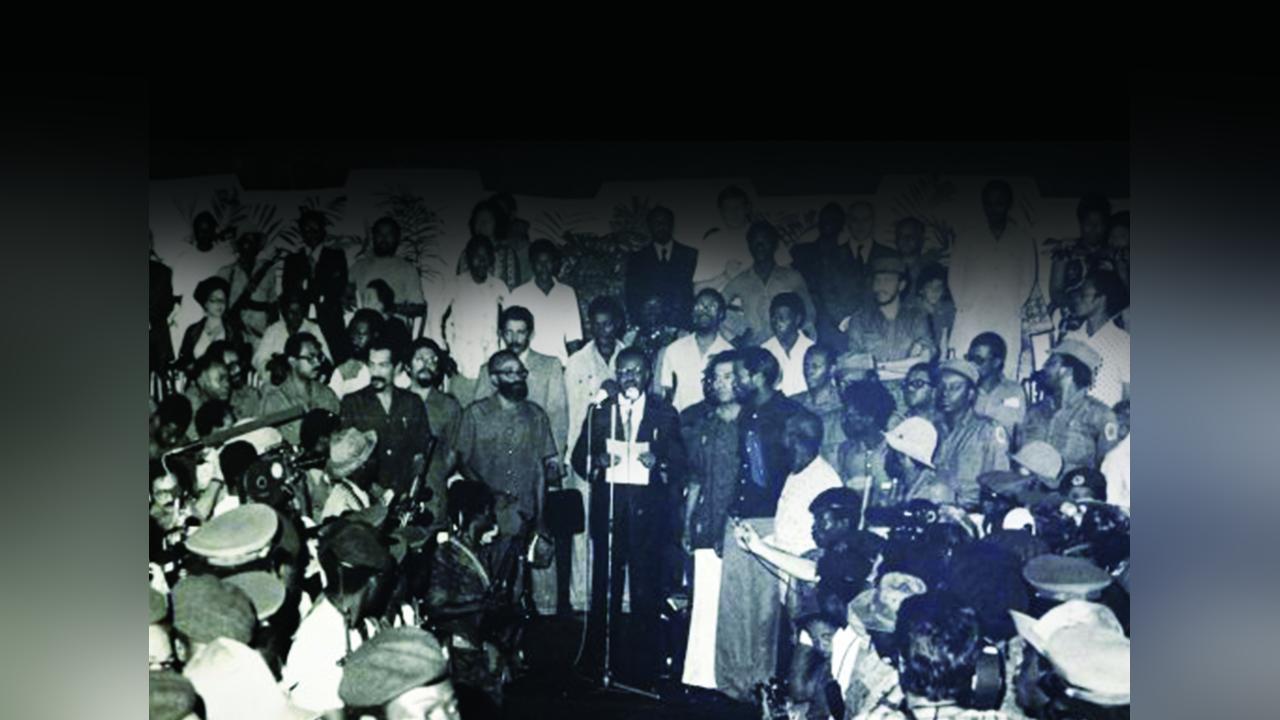Africa-Press – Angola. Angola celebrates 49 years since it achieved National Independence on 11 November 1975, after 14 years of armed struggle. This year, the date is marked under the motto “National unity, production and sustainable development”, with the aim of promoting a deep reflection on the sacrifices made by Angolans for this achievement.On November 11, 1975, in the current Largo da Independência, Agostinho Neto, president of the MPLA, proclaimed the Independence of Angola before Africa and the World, in an atmosphere of euphoria, anxiety and threats, putting an end to almost 500 years of colonial presence in Angolan territory.
Soon after, António Agostinho Neto was sworn in as the first President of the newly proclaimed People’s Republic of Angola.
It was up to Lúcio Lara, president of the “People’s Revolutionary Council” (current National Assembly), to invest Neto in the position of President of the People’s Republic of Angola, on November 12, 1975, in a ceremony that took place at the Luanda City Hall (current Government of the Province of Luanda).
He was invested on the 12th with retroactive effects to the 11th, given that he was already the leader of the revolutionary process of Independence.
The People’s Revolutionary Council approved, in a joint session with the Central Committee of the MPLA, the national anthem, the flag and the emblem, as well as the Constitution of the People’s Republic of Angola of 1975, promulgated by Lúcio Lara, in the same solemn act of proclamation of Independence.
In the proclamation, Agostinho Neto defines as his immediate objective the expulsion of invaders from the national territory and the complete liberation of the country and its people from foreign oppression.
The threat to the new nation hung in the air, because the three movements that signed the Alvor Accords (FNLA, MPLA and UNITA), which defined the roadmap for the country’s independence, were at odds, each confined to a different part of the country. There was even a parallel proclamation in Huambo and Ambriz (UNITA/FNLA), which was not recognized by the international community.
Culmination of the struggle process
November 11, 1975 was the culmination of a process that began with the emergence of the first nationalist movements in the late 1950s, consolidating with February 4, 1961, which marked the beginning of the armed struggle for national liberation.
On that date, nationalists armed with machetes confronted the colonial power, storming prisons in Luanda to free Angolans imprisoned for defending self-determination.
On March 15 of the same year, the colonial regime was shaken by a large-scale revolt in the provinces of Uíge, Zaire and Cuanza-Norte, triggered by the UPA.
Since then, 13 years of armed struggle against the Salazar dictatorship have followed, carried out by fighters from the three liberation movements on various fronts in Angolan territory. The colonialist dictatorship, with its machinery of repression, was overthrown by the Armed Forces Movement (MFA) on 25 April 1974, culminating in negotiations with the liberation movements with a view to Angola’s independence.
On January 15, 1975, the Alvor Agreement was signed in Portugal between the Portuguese Government, FNLA, MPLA and UNITA, which defined November 11 as the date for Independence, preceded by General Elections and the formation of a single army.
Ideological differences and interference from foreign powers, in the context of the Cold War, prevented an understanding between the three moments (FNLA, MPLA and UNITA), giving rise to confrontations that culminated in the expulsion of the FNLA and UNITA from Luanda.
Independence is proclaimed by the MPLA, with the threat of FNLA forces north of Luanda, and the South African army, south of the Cuanza River.
Having consolidated its power, the new government began a counteroffensive, aided by Cuban internationalist forces, which resulted in the expulsion of South African troops from Angola on 27 March 1976.
With the proclamation of Independence on 11 November 1975, and with the establishment of the first Government of the then People’s Republic of Angola, the country was recognised and admitted, on 12 February 1976, as a member of the Organisation of African Unity (current African Union) and, on 1 December of the same year, into the United Nations (OAU).
FIRST GOVERNMENT OF ANGOLA AFTER INDEPENDENCE
President of the Republic
Antonio Augustine Neto
Birth Wolf
Prime Minister
Nito Alves
Minister of Administration
Internal
Antonio Jacinto
Minister of Culture
Lopes Texeira
Minister of Education
Bento Ribeiro “Cabulo”
Minister of Industry
Iko Career
Minister of Defense
Mario Almeida
Minister of Health
Jose Eduardo dos Santos
Minister of Foreign Affairs
Carlos Rocha “Dilolwa”
Minister of Economy
David Aires Machado “Minerva” Minister of Labor
Welcome Pitra
Minister of Fisheries
Victor de Carvalho
Governor of BNA
Diogenes Boavida
Minister of Justice
14. Saydi Mingas
Minister of Finance
Carlos Fernandes
Secretary of State for Agriculture
For More News And Analysis About Angola Follow Africa-Press






